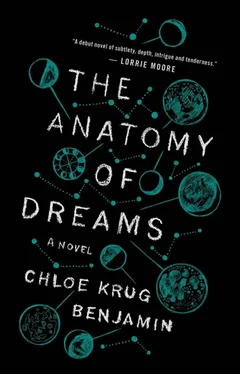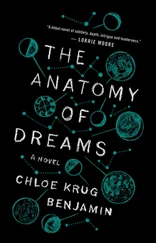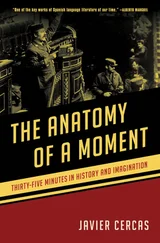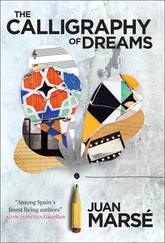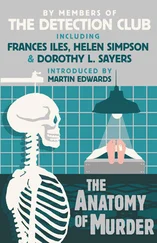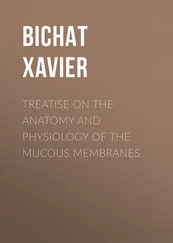“This is all I need?” I asked.
“We’ll see,” said the woman, staring at her computer screen. “Are you an athlete?”
“No.”
“An international student?”
“No.”
“Have you been issued a call to active military duty?”
“Nope.”
“Are you withdrawing for medical reasons?”
I shook my head.
Finally, the woman looked at me with brief appraisal, like an experienced doctor who could issue a diagnosis after a cursory glance at a wound, a rash, a swollen knee.
“Then all you need is this,” she said, passing me a second form, an application for readmission, across the table.
I brought the application for readmission to Snake Hollow like a talisman, a reminder that I had not traveled too far into my decision for it to be undone. I hadn’t even told my parents I’d pulled out of college. I just said I was taking the summer to “reassess my options,” that a job had materialized and I wanted to see if it had any staying power before committing to the fall semester. They were alarmed, as I knew they would be. Minutes after I wrote by e-mail, I received a phone call from New Jersey with both of them on the line.
“Have you considered what you’ll do if it doesn’t work out?” my father asked, his voice booming through the receiver with more volume than it ever had in person. “Really picture what we’re talking about here. You’re twenty-two, twenty-three, you get bored or you get fired—”
“I mean, God forbid, it could be later than that,” said my mother. I pictured her face, which must have acquired the look of valiant determination it did whenever she was fighting a losing battle with one of her children: her forehead creased, her eyebrows inching toward one another — eyebrows that, in their persistent, wiry growth, always seemed a bit too long for a woman.
“She could be twenty-eight,” my mother said, continuing. “She could be in her thirties. You could be in your thirties, Sylvie, without a job or a college education, and what do you do then? You go back to school at thirty-five, that’s a very big undertaking. My God, I couldn’t go back to college now. I can teach college, but I couldn’t go back to college.”
“So maybe I’ll teach college,” I said. I felt raw and loose and panicked.
“Listen, honey, nobody’s laughing,” said my mother.
“But I have what every college graduate wants,” I said. “A place to stay, a steady income, a job with one of the biggest researchers in my field. Besides, it’s Mr. Keller. You guys love Mr. Keller.”
“I wouldn’t say we love him,” said my father. “We like him just fine. But we like the idea of you staying in school a lot more.”
When Gabe returned, rubbing vigorously at his head with a towel, I was sitting on the bunk bed that was mine for the summer. The room had eight bunks in all, so we called it the Bunk Room. It had been created to accommodate larger groups of visiting researchers, but now Keller used the room to house a few assistants at a time, which meant that most of the beds remained empty. The compound’s original bedrooms functioned as guest rooms for people moneyed enough to come to the Vineyard for consultations and training sessions. Keller couldn’t perform the sleep assessments that we would later do in Fort Bragg and Madison — the compound didn’t have the equipment — but he often led seminars and retreats on lucid dreaming.
The people who came to these workshops weren’t patients; their sleep was entirely normal. Lured by the novelty of lucid dreaming and the spectacular promises made by Keller’s promotional materials ( WORLD SIMULATION , read one pamphlet: Just as a flight simulator enables people to safely fly, lucid dreaming can allow you to experience any imaginable world ), they came in droves on weekends: coiffed East Coast housewives, UMass undergrads in Teva sandals, eccentric elderly couples, even the rare celebrity. Itching at the limits of their own lives, they longed to try on new worlds like T-shirts, to slip easily into their fantasies and discard them before the plane ride home.
Did they do it? It was difficult to tell. There were always a few who left dissatisfied, Gabe said, but many people had been coming for years. Each month, we received testimonials: For me, learning the truth of my feelings, however painful, has opened me to my heart and to my capacity to know love , wrote Juanita Diaz, fifty-six, from Florida. And from John Simpson, thirty-four, an Afghanistan veteran from Colorado: I know that I can change a frightening situation in a lucid dream, so I don’t panic or get scared. And the strange thing is that in waking life I don’t run away either anymore. People think I’ve changed through the years, but the fact is that this is the real me coming out .
Later that summer, we watched as a seminar group napped on blue mats spaced throughout the living room. Gabe and I were standing on the beach, fifty yards from the house, but we could see through the room’s French doors. Inside, twelve adults lay curled like fetuses, or like the pink shrimp that sometimes washed up onto the beach. Keller used yogic breathing and Eastern meditation techniques to help his guests nap during the day — it was easier and less expensive than hosting an overnight study — but I still wondered if any of them were faking it. Keller himself sat a small table, making longhand notes on one of his yellow pads as he scanned the sleepers. Beside each mat, there was a mini notebook and pen; to enhance dream recall — the first step in lucid dreaming — each patient would be asked to write down whatever they remembered as soon as the alarm went off.
“So you believe this stuff?” I asked Gabe. The ocean slid over my feet, frothy and white as steamed milk, and I wriggled my toes into the sand.
“Of course.”
He picked up a piece of driftwood and chucked it into the spray. I squinted at the living room. The adults looked eerie: coiled into themselves and vulnerable with belief as Keller watched from his post in the corner. How invested could he be in these workshops, I wondered, in people he might only see once? That evening, after all the guests had left, I was rolling up the blue mats in the living room when I came across a stack of receipts. Keller had left them on the round table where he’d been sitting, and each one showed a charge of $425.
It was a four-hour workshop with a break for lunch — local lobster rolls, tasting mostly of mayonnaise, which Keller ordered by the trough. I did the math: slightly over $100 per hour — certainly less than the hourly rate of most psychologists. Still, Keller’s workshops weren’t therapy sessions, not exactly; for at least one of those hours, he was watching them sleep. Something about it didn’t seem right. But it was true, I reminded myself, that Keller was in need of funding, and nobody expected him to give his research away for free.
I didn’t ask him about it. As the summer went on, I would unlearn some of the nervousness I felt around Keller — a holdover from high school — but it was acute in the beginning. Though he was gone the weekend we arrived, it felt like he was right there with us. All through the house, discreet, typed signs hung from doorknobs or delicate nails. PLEASE DO NOT TOUCH was suspended beneath a framed handkerchief, the fabric yellowed and embroidered with a tiny C.G.J. (Carl Jung’s, Gabe told me, though he didn’t know how Keller had acquired it). DOOR CLOSED WHEN IN SESSION fluttered from the doorknobs down the hall. We knew there were no sessions when Keller wasn’t there, but neither one of us ever tried to open them.
What struck me most of all, that first weekend, was how hard Gabe worked. He woke before dawn and spent the early hours reading in a rocking chair that looked out over the back porch. When I fumbled out of bed around eight or nine, I found him entirely absorbed: his back bent over the pages, a pen in hand, glasses pushed up on the bridge of his nose. I couldn’t help but follow suit. Keller had assigned me a tall stack of thick, pungent books, the pages yellowed and tissue-soft. There were the seminal texts by Freud and Jung, along with more recent research on a range of sleep skills and disorders: Robert Stickgold’s Sleep and Brain Plasticity , Rosalind Cartwright’s The Twenty-Four Hour Mind, Trauma and Dreams by Deirdre Barrett, and Stephen LaBerge’s full canon on lucid dreaming. Then there were the studies: academic papers with minuscule print and references so obscure that each one sent me on a fact-finding goose chase. In this way I slowly spun myself a web of knowledge, painstakingly linking one idea to the next, my purview widening strand by strand.
Читать дальше
